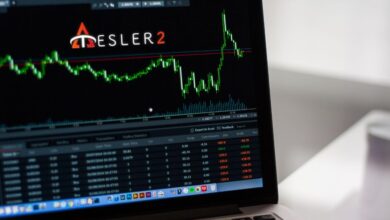What is Relative Market Share?

For any business to expand and grow, it is essential to have systems in place that chart the company’s market share and how it and its products are faring in the market. Only then can it take adequate measures to get ahead of the competitors, capture the company’s market, and be an industry-leading player. Based on the relative market share, strategies need to be worked out regarding future investments, new product launches, and reworking optimized marketing plans.
What is market share and its two main components, the Absolute Market Share and the Relative Market Share, as a calculated share of market?
What is Market Shares?

The Absolute Market Share of a company against relative market share gives an overall outlook of how its market share is faring against its competitors and indicates its influence in the concerned industry. For example, it is calculated by projecting its sales as part of all the competitors’ total sales. The result is in percentages, i.e., the percentage of sales and a company’s market niche with all rights reserved.
The Relative Market Share of a company is also an indicator of the market strength, but in this case, it is compared to the single largest competitor. It is a measure of how well a business performs and its relative strength against its nearest player. This is also an excellent way to evaluate the threats and opportunities of a company. By measuring up against one single competitor, it is possible to know if a company’s market share is falling or rising and whether the nearest competitor is cutting into its market value and customers.
For this post, the focus will be on Relative Market Share.
Calculating Relative Market Share
To arrive at the Relative Market Share, you have to divide the company’s share of the market into percentage terms by the percentage of the nearest competitor’s market value. The one leading the market will always have a greater market share than 1, while the rest will follow. Those with a market value of more than 0.33 are considered to be the market leader.
An example will illustrate the point better.
Suppose your company’s market share is 25 percent. That means that the total competitors have 75 percent of the market pie. Now divide yours by that of the others. In this case, it is 25 divided by 75 or 0.3333. This is your Relative Market Share. If you want the market share to be in percentage terms for easy tracking, multiply the figure by 100. Therefore, your relative market share is 33.33 percent – a sign of being a market leader with all rights reserved to be so.
Factors to Consider for Relative Market Share
There are several factors to consider before calculating relative market share and what are market shares.
First, it has to be taken into account that the competitor has a huge relative market share, and the measurement has to be made to arrive at the market shares. First, it is essential to benchmark the main player and then work out its corresponding market value. Next, it has to be considered that there is one leader in the market who has the biggest control. All other brands will have a relative market share that is less than the main one to measure relative market share.
What is the relative market share in the BCG matrix?
The Boston Consulting Group (BCG) well-known matrix of share relative market growth has suggested that the relative market share of a company that has a major market share is generally more profitable than its competitors.
How do you calculate the relative market share?
The market share relative of a company is calculated by dividing its share of the market as a percentage of the nearest competitor. For example, the market leader will have a relative market share greater than 1. A robust company will have a market share of 0.33 or more.
What is a good relative market share?
A good figure is one of 0.33 percentage points or more. It shows that the company, in absolute terms, is having a market share of 25% or more and has met the potential threats and opportunities before it.
How is market share defined?
The relative market share can be defined as the percentage of the market that a business controls concerning the total of all such products in the industry. For example, market share is defined in absolute and relative figures with different calculating methods. But both are an indication of the strengths, opportunities, threats, or weaknesses of a business.





